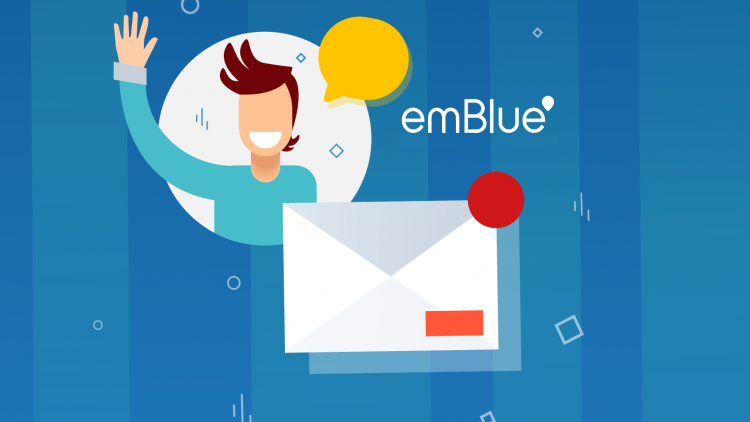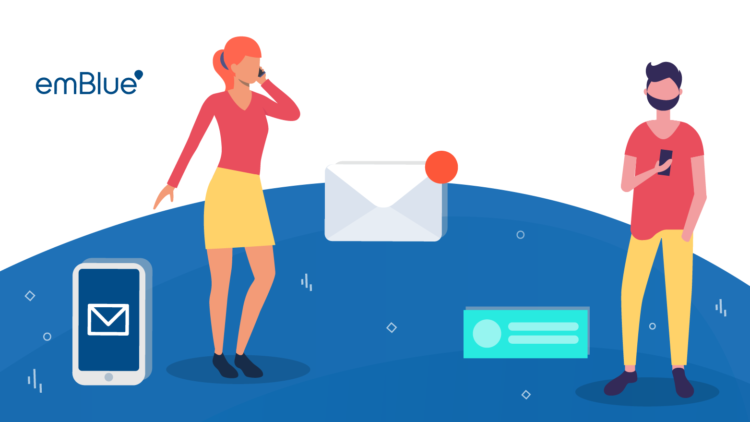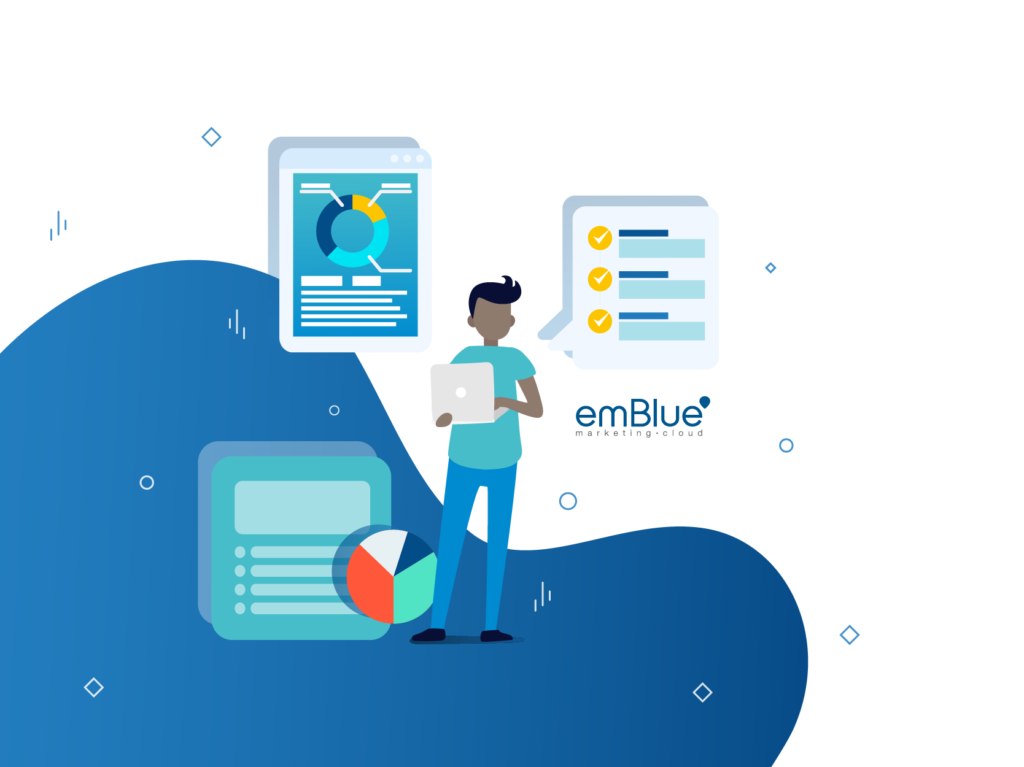If we talk about an omnichannel strategy , a “hello, how are you?” it is much more than a simple greeting Offering a good welcome message to our clients, through email or another channel, can impact the entire relationship with our brand. What is a welcome message? What is it for? How to write it? Find out in this note!
Did you know that the welcome message is the one that captures the most attention from the user?
Imagine this: a person visits your website for the first time. While browsing the site a push notification inviting you to leave your details to subscribe to the newsletter.
So far, the user may not feel interested in giving you their information, after all, we are bombarded by messages of this kind. However, in exchange for doing so you offer him something that is just what he was looking for! It could be free downloadable material, a discount on your first purchase, or exclusive access to an event, to name a few examples.
It’s your lucky day! what you have offered has hit the mark .
What will you get in return? In this case it is the least, the important thing is that in addition to that “gift”, the user expects your welcome message almost as long as they will expect, when making their first purchase, the possibility of giving feedback on their experience with the brand. Did I already tell you about Net Promoter Score? I don’t want to deviate too much, but if you are interested in simple customer retention you should read this other note from our blog;)
Undoubtedly, that is the main attraction of this kind of communication, the interest of the user. Because that means only one thing: it will be waiting for that message and, therefore, the opening possibilities are greater .
Now that you have their full attention, it is time to receive it accordingly , what would that be like? Calm down, we will explain it to you below.
What is the welcome message to a customer?
The welcome message to a client or subscriber is one that is sent with the aim of greeting the user and thanking him for the action he has just carried out . Among them, we can distinguish:
- Subscription to the blog.
- Register in the online store to buy a product.
- Leave your WhatsApp contact to receive updates from the company.
- Subscribe to the brand’s SMS.
Customer welcome messages are communications that we can schedule automatically (sorry, automating is too important not to say ) These respond to that action that the user has just performed for the first time in relation to our business.
What is a welcome message to a customer? The welcome message to a client or subscriber is one that is sent, in an automated way, with the aim of greeting the user and thanking him for the action he has just carried out .
Welcoming is possibly the first direct interaction you have with that person and this only means one thing: their relationship is just beginning . To make a good first impression – remember that it is the most important – there is nothing like giving a good welcome .
The possibilities that this kind of message offers us are endless. Therefore, it is important to know why we should strategically plan this type of interaction with users
Why send customer welcome messages?
Do you have a chair handy? No? So walk over to one and sit down before reading this: welcome messages via email have an average open rate of more than 50%.
Welcome messages sent via email have an average open rate -u Open Rate- that exceeds 50%.
Source: Invest
In the case of SMS marketing , we told you a few days ago that 98% of the text messages that arrive are read by the recipients almost immediately .
What about the messages that you can send to your clients through WhatsApp? These They have an open rate that ranges between 70% and 90%.
As you can see, the welcome message has a lot of potential within your omnichannel strategy.. And this is largely due to the fact that, regardless of the channel you use, the best of all will always be that there will be someone waiting for you on the other side.
In addition, there are other reasons to send a welcome message to a customer . Which? Well, it is what follows in the note
What is the welcome message for?
- Start building a bond. Relationship marketing is built on quality interactions. A great way to get off to a good start is with your welcome message.
- Introduce oneself. As we said before, first impressions are key. Taking advantage of the welcome message to introduce yourself and show interest in the user is a perfect way to give that impression that you are looking for so much.
- Add value. The first message you send to your customers and subscribers can serve to initiate the link with users adding value. That is, guiding them with useful information about your products and services, offering them a kind of guide to know where to start.
- Publicize a product or service. The welcome message represents a very valuable opportunity to start a conversation with your customers and subscribers, guiding them to discover your products and services.
- Lead the user to the next step. We have all been new at one time or another, whether in a job or in a group. That feeling of not knowing what to do or where to start is not pleasant. The welcome message can lead users to the next step. They will appreciate that help.
- Increase conversion. By using appropriate calls to action in your welcome message, you can increase your business conversions.
How do you make a welcome message?
It’s time to get to work on customer welcome messages Where to start? We give you a brief guide so as not to fail.
Define goals
What would become of our strategies without objectives? Where would our campaigns lead us without these goals to be achieved? In the case of the welcome message It is important to define what we will try to do from the moment a user provides us with their data .
For example, it may be that in the welcome message to a client our objective is to reinforce the identity of our brand. Based on this, we will place a strong emphasis on staying connected through our social networks or we will storytelling sharing the history of the company.
In other cases, we may seek to provide useful information, mainly by sharing featured blog articles or tips and recommendations for the use of our platform. While another goal may be conversion. In that case, we will include discount codes, special promotions or exclusive accesses.
The important thing before starting is to be clear about what objective we intend to achieve with the welcome messages for customers.
Choose the right moment
This would be something like having rhythm. The ideal is to welcome as soon as a user registers in our database . However, if it is a sequence of welcome messages, it is possible to use other time frames as well.
For example, if a person subscribed to the blog with their email, an immediate first communication can be sent to thank the registration and share the outstanding contents of the blog. Adding, in addition, links to social networks.
A second email could be sent two days later to share the articles chosen especially for the user. And uA third email would be sent a week after registration to invite the subscriber to a webinar or download content.
In this sense, user segmentation is very important to know what type of welcome message is appropriate.
Customize welcome messages
Something essential in any interaction with customers or subscribers is personalization. From using the user’s first name, to offering relevant content or products based on their preferences. Everything is useful when starting to build a quality bond with our audience.
You wonder, for example, how can you personalize a good email marketing campaign that includes a welcome message to customers? This note has all the answers you need (and a bit more too).
Think of specific welcome messages for each audience
Taking into account that people tend to receive messages from companies frequently, either through email marketing , SMS or even WhatsApp, it is important that in the welcome message we explain precisely what type of communications they are going to receive for having registered.
In addition to indicating the type of messages that we are going to share with them, we must tell them how to unsubscribe or update their preferences regarding these notifications.
Includes calls to action
If you have your goals well defined and segmented users, it will be much easier to include appropriate calls to action in each welcome message .
If your goal is to sell more, your CTAs should direct users to the products you are trying to market. To do this, you can use discounts or promotions to increase interest and sales possibilities.
If what you want is to bring more traffic to your website, it will be essential to include a CTA that links to the content you are trying to position. But yesIf you are looking to increase engagement and generate community, you should focus your CTAs on the social channels of your business, for example.
Templates for customer welcome messages via email, SMS and WhatsApp
Beyond these recommendations, we want to give you something else. Therefore, below we share 3 templates that you can use as a welcome message for clients through email, SMS marketing and WhatsApp .
Because omnichannel is our thing , you already know
Welcome message via email
To create an email Welcome you have multiple options in terms of extension, format, design and elements to use. Remember to always be clear about your goal.
In the template that we will share below, we use the subscription to a streaming platform as an example.
Hello NAME!
Welcome to NAME of the PLATFORM.
Everything is ready for you to start enjoying the NAME of EXPERIENCE experience.
Here are all the details of your subscription:
We will always be here to help you with whatever you need. We would also love to hear from you to personalize your experience. Write to us here.
We would love to hear from you!
Welcome message via SMS
To send SMS we must take care of the number of characters. The rule is not to exceed 140. In this case: the good, if brief, twice as good .
Hello!
Thanks for signing up!
Now you can receive before anyone else all our news.
Access your special discount here .
Welcome message via WhatsApp
Although there are no character limits, the recommendation to connect with clients on WhatsApp is also to keep it short .
Remember that in this platform the key is to talk and the ideal is to give rise to the response of the users so that the interaction flows naturally .
Hello NAME!
We welcome you to the COMPANY NAME family.
Thank you for using our services.
All ready to go?
——————————————————————————————————————
There are no more excuses. You have all the information you need to create a perfect welcome message for your audience
Do you have any doubt? Need help? Discover how we can accompany you from emBlue .
FAQ: How to send a welcome message to a customer?
What is a welcome message for?
The welcome message to a client or subscriber is one that is sent with the aim of greeting the user and thanking him for the action he has just carried out.
What are the 5 key steps to achieve a good welcome message?
The 5 key steps are:
- Clearly define objectives.
- Choose the right time to send it.
- Personalize content dynamically.
- Be very specific about the goal of the message.
- Include calls to action or CTAs .
Why use welcome messages to our customers?
The 6 fundamental reasons to use welcome messages are:
- Start building a bond.
- Present yourself to customers with the right message.
- Add value from the start.
- Publicize our brand, product or service.
- Lead the user to the next step of the link.
- Increase conversion.



